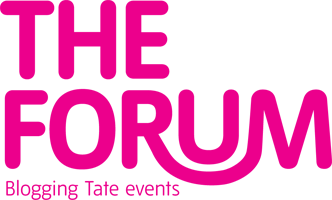The INS Chief of Propaganda Anthony Auberach issues me with a pass and a manila folder containing the press briefing. Minutes later, one of the officials, suitably dressed in a grey suit, offers the following instructions:
You have a seat reserved and can move freely around the auditorium to take photographs. And flash, yes, feel free to use flash. In fact, should you wish, you can go up on stage and shoot from there.

Freedom in the Tate's Clore auditorium to be visible and mobile? Now that makes a change. At this point it becomes clear that nothing is what it seems. The polished surface, the meticulous attention to detail and the Press cards, all of which are issued with an identical number 170109, indicate an elaborate staging; a happening presented using the aesthetics of a political address, a la The White House.


But who is this Tom McCarthy taking the stage in front of the podium? Is he a doppelganger or simply a man sharing the same name? What did I expect when the theme is inauthenticity and the declaration, according to the INS propaganda machine is "a compelling critique of the notion of authenticity in art, literature, philosophy and politics". The Joint Statement issued by INS General Secretary Tom McCarthy and Chief Philosopher Simon Critchley sets out to summarise the key points of the declaration (first published in December 2007). It also warns that "unauthorised recordings and transcripts" in cyberspace "cannot be authenticated and may be unreliable".

Beware, the truth is not out there. But then neither is it in here. Truth is simply a five-letter word and sometimes it hurtt(s).
"For us, all forms of periodisation suck. We have no idea when modernity is meant to have started and no clue when it might end."
"Today we want to advance a set of proposals, of numbered theses, that will state categorically - catechistically even - some core elements of INS doctrine. These statements, like all INS propaganda, should be repeated, modified, distorted and disseminated as the listener sees fit."
OK, I hear you. So, to hell with formality.
The two men dressed in grey suits and shiny shoes take their places at the podiums. A UN-like insignia flashes up behind the two men (Reagan eat your heart out, Arnie take a look). The logo is composed of a globe-like graphic with a sponge-like inside oozing from its perimeter. Both are enclosed by a laurel leaf-like wreath crowned by a coyote-like dog. The two men are personas non gratis. As they each read from the prepared statement, I pick out some buzzwords: materialism, postmodern, Heideggerese and other heavily encrypted phrases and names, laced with at-tension:
Jean-Francois Lyotard, Socrates, Plato, Copernicus, Ernest Shackleton, Aristotle, St Paul, Maurice Blanchot, Marquis de Sade, Casper David Freidrich, Bataille, Frankenstein, Mark E. Smith, Wile E. Coyote.
In amongst these heavy-weight titles some women are mentioned. However, they are, for the most part, fictional creations positioned in relation to their male creators. There's Racine's Phaedra, Flaubert's Madame Bovary and Ibsen's Hedda Gabler... now her(e) comes another, Joyce's Molly Bloom.
This is a man's man's man's world
But it wouldn't be nothing
Nothing without a woman or a pun.
So where are the Hillarys, the Condoleezzas and the Barbaras?

Everything feels unstable with language at the helm.
"for the world is not perfect, n'est-ce pas?"
"homo viator"
"das Dass seines Da" which, I read later in the press briefing, is related to Heidegger. Later, I ask a German friend about the phrase. He is baffled, the syntax confuses him. I still am.
Then, it's question time, my favourite part. The audience's chance to interact. I note down part of the third and last question:
"You mentioned Warhol, I'm waiting for him to appear... I'll ask a very simple question and I'd like a very quick answer..." The answers have been scripted and the question is left hanging. It doesn't matter what you ask, you'll always get a set answer.

Repetition, repetition, repetition.

If I say it often enough it becomes a mantra. If I do it often enough it becomes a habit. In fact, this theatre of the absurd could go global, especially if McCarthy's desire "to franchise it as a cultural event" takes hold.
The I.N.S. - Coming soon to an institution near you.
 read more
read more






















